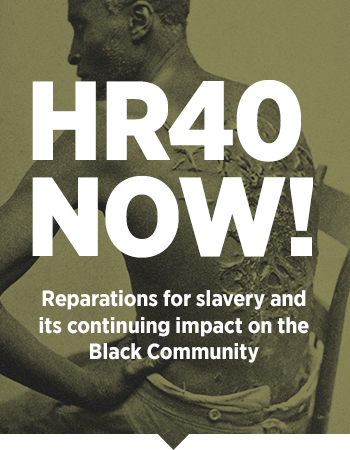Today, May 1, 2014, is International Labor Day. It is worth summing up how well American workers—and their unions—have fared over the past year; since the so-called economic recovery began in mid-2009; and for the recent decades preceding.
What’s happened to jobs, wages and incomes, health and retirement security, and other indicators of the quality of life for the more than 100 million non-supervisory wage and salary earners—the core of the working class in America—over the past decade and especially since 2009?
What a summary of the facts tell us is as follows:
*While jobs have been created for managers, supervisors, and highly skilled business and technical professionals since 2009, job levels for the core of the American working class—the category of the more than 100 million ‘Production & Non-Supervisory Workers’—is still 11 million below 2007 pre-recession levels. Manufacturing jobs are still 1.4 million fewer today than in 2007, and Construction jobs 1.3 million fewer.
*The real unemployment rate in the US is approximately 14%, when the ‘hidden unemployed’ are added to the ranks of the officially declared full time unemployed (U-3) and underemployed (U-6) estimates. That’s approximately 22 million still jobless after five years of so-called economic recovery.
*The quality of job creation since 2009 has been extremely poor by past historical standards. The US is ‘churning out’ high paying-good benefit jobs for low pay, increasingly part time/temp (contingent) jobs, with few if any benefits. 79% of jobs lost during the recent recession paid more than $14/hr., while 58% of the jobs created since recession were low pay (less than $14 and with a median of only $7.69hr.)
*While 5 million plus jobs have been added since the official ‘end’ of the recession in June 2009, more than 5 million have left the labor force or been unable to find work as new entrants—a 5+million ‘in’ and a 5+ million ‘out’ additional churn. As labor force participation has declined in general (from 66.2% to 62.9% since 2009), and has fallen especially rapidly for age groups 35 and below, previously retired workers are entering the labor force in record numbers as their savings are depleted and retirement benefits are being reduced. The fastest growing age groups entering the labor force are: age 65-69 (64% increase in participation), 70-74 (91%), and >75 (81%).
*The US economy is not only churning out high pay for low pay, and labor force drop-outs for new hires, but is also churning non-union for union jobs, in the process reducing private sector unionization to historic lows not seen since the 19th century.
*Union membership in the private sector has fallen to only 6.7% of the total labor force, or 7.3 million—down roughly 5 million since 1980 despite 45 million more wage workers having entered the labor force. And for the first time in decades, since 2009 union membership in the public sector has also begun falling since 2009, down by more than 2% points.
*The US is experiencing a chronic long-term problem in the 21st century creating jobs sufficient to keep up with the growth of its population, a structural problem in the US economy that clearly pre-dates the onset of the latest recession. Since just 2009, the ratio of employed to the US population has fallen from 63% to 58.7%. The population is growing much faster than the economy can create jobs.
*The US economy has developed a corresponding problem of inability to find jobs for the long term unemployed, whose numbers are growing as a percent of total jobless. The Employment to Population ratio has continued to decline through both recent recession and recovery, revealing a chronic structural problem of job creation in the US economy long term. The long term jobless as percent of total unemployed remains twice that (36%) of historical average (18%) today, five years into the recovery.
*Income inequality is growing in the US not only because the rich are getting richer, but because the US working class is locked into stagnant wage growth (in best of times) or declining wage growth (in recession or slow growth times) for the past 30 years.
*The real average hourly wage for the 100 million plus full-time employed core working class, adjusted for inflation, has declined despite nearly five years of ‘recovery’, from $8.86/hr. (adjusted in 1982-84 prices as per the US Government estimates) to $8.83/hr.
*But when adjusted for the core working class as a whole—not just full time employed—the decline in core working class income since 2009 has been precipitous—(i.e. when adjusted further for the rise of millions more part time/temp workers, unemployed, for millions of workers leaving the labor force, for millions rise of workers on disability, for millions’ expiration of unemployment benefits, and for workers’ rising share of healthcare benefits costs and reductions of pension benefits). The adjusted decline is at least 15%.
*Per US Government statistics (unadjusted per above), real median household income fell 4.1% under George W. Bush, collapsed by 9.6% since 2008 under Obama, recovering only 3.4% of the overall decline since 2012—i.e. a net loss of more than 10% since 2000.
*The share of wages & salaries of total National Income has declined steadily for 30 years, from 55.6% in 1983 to 52.0% in 2007 just prior to the recession. It has continued to fall during the recession period, 2007-09, as well as during the post-2009 recovery, to 49.1% today.
Concluding Comments
Much has been written over the past year about the growing income inequality in America, and how the wealthiest 1% households, who almost exclusively derive their income from returns on capital (capital gains from stock & bond trading, foreign exchange & derivatives speculation, interest, real estate, rents, etc.), have accrued 95% of all the national income gains in the US economy since the June 2009 so-called economic ‘recovery’ officially began.
Liberal economists like Paul Krugman, Robert Reich, James Galbraith and others have been writing numerous books and countless newspaper columns on the subject of income inequality in general over the past year. They have finally discovered in recent years the sad fact of accelerating income inequality in America, a developing trend that has been in progress for decades, at least since the early 1980s.
But while liberal economists today are finally focusing on why and how the wealthiest 1% are accruing more for themselves, not enough attention has been paid to why and how more than 100 million working class households in America have been doing so poorly—and increasingly so—during recent decades and in particular during the most recent period, 2004-2014. Nor have mainstream commentaries offered much in the way of correcting the historic decline in American working class conditions. How to improve the latter is just as important as taming the runaway capital incomes of the rich and super-rich. But only tepid and conservative proposals are forthcoming thus far from the mainstream economic profession, proposals that are long term and ‘safe’ for the owners of Capital today and do not embarrass their political friends and benefactors.
That condition of the 100 million plus working families in America today, International Labor Day 2014, is as lamentable as the accelerating accrual of income and wealth by the 1% is disgusting. Of course, the two trends are not mutually exclusive but directly related. The rich and very rich are becoming super-rich and mega-rich in large part at the direct expense of the rest.
(Note: A more detailed analysis of these trends is forthcoming in a public article by Dr. Rasmus under the title ‘An American Labor Balance Sheet: 1984-2014’. Look for a copy on his website below in coming weeks).
Dr. Jack Rasmus is author of the 2010 and 2012 books, “Epic Recession: Prelude to Global Depression” and “Obama’s Economy: Recovery for the Few”, Pluto Presss, 2010 and 2012. He hosts the weekly radio show, ‘Alternative Visions’, on the Progressive Radio Network in the USA. His website is www.kyklosproductions.com and his blog is jackrasmus.com. His twitter handle is @drjackrasmus.














